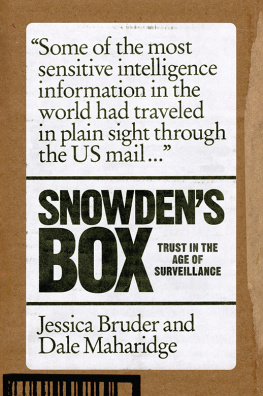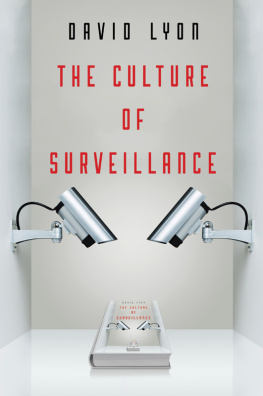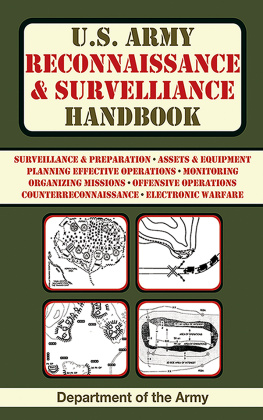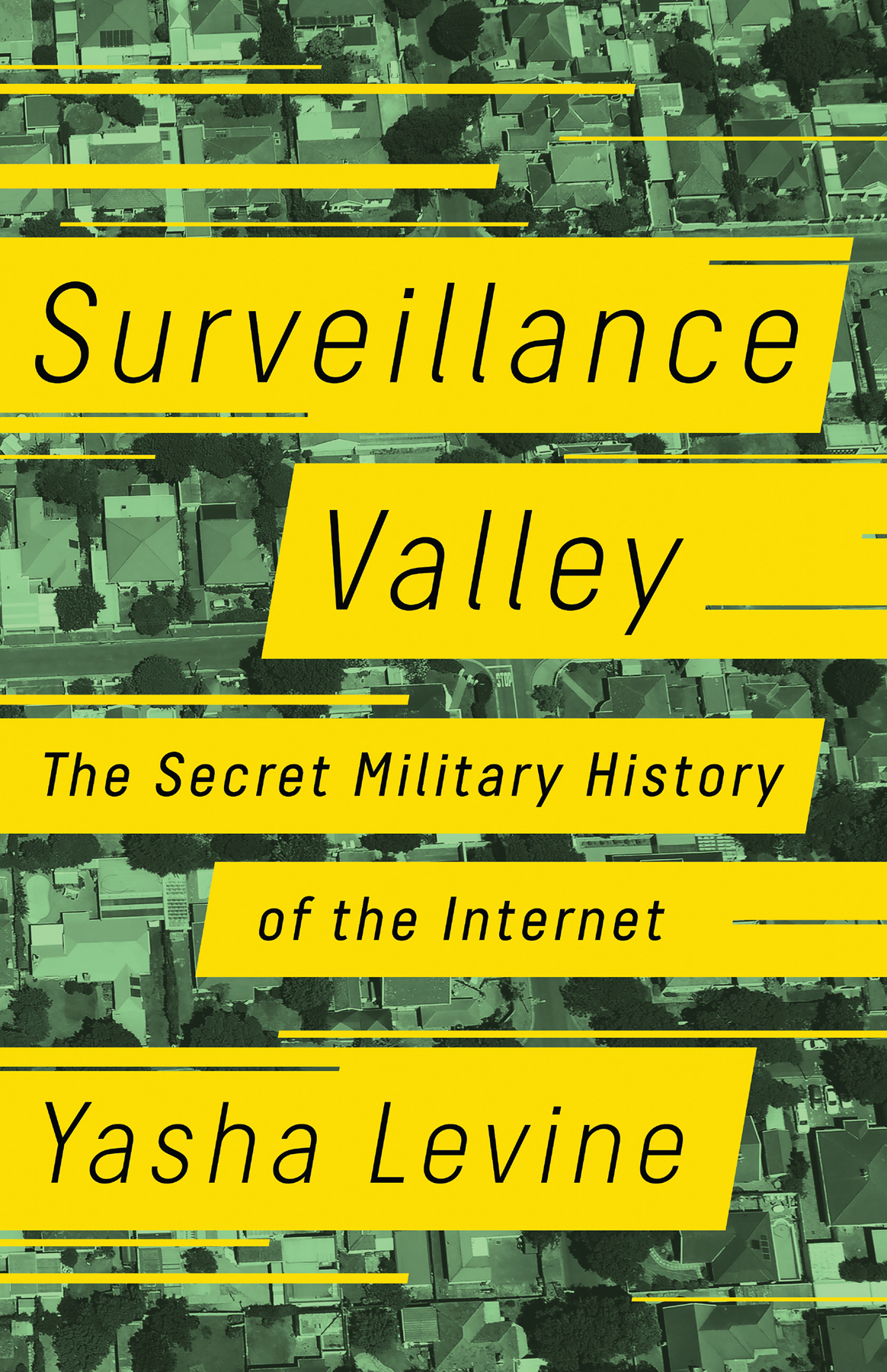Copyright 2018 by Yasha Levine
Hachette Book Group supports the right to free expression and the value of copyright. The purpose of copyright is to encourage writers and artists to produce the creative works that enrich our culture.
The scanning, uploading, and distribution of this book without permission is a theft of the authors intellectual property. If you would like permission to use material from the book (other than for review purposes), please contact permissions@hbgusa.com. Thank you for your support of the authors rights.
PublicAffairs
Hachette Book Group
1290 Avenue of the Americas, New York, NY 10104
www.publicaffairsbooks.com
@Public_Affairs
Published by PublicAffairs, an imprint of Perseus Books, LLC, a subsidiary of Hachette Book Group, Inc. The PublicAffairs name and logo is a trademark of the Hachette Book Group.
The publisher is not responsible for websites (or their content) that are not owned by the publisher.
Library of Congress Cataloging-in-Publication Data
Names: Levine, Yasha, author.
Title: Surveillance valley : the rise of the military-digital complex / Yasha Levine.
Other titles: Rise of the military-digital complex
Description: New York : PublicAffairs, [2018] | Includes bibliographical references and index.
Identifiers: LCCN 2017052227| ISBN 9781610398022 (hardcover) | ISBN 9781610398039 (ebook)
Subjects: LCSH: Electronic surveillanceUnited States. | InternetHistory. Civil-military relationsUnited States. | Military researchUnited StatesHistory. | ARPANET (Computer network)History. | Domestic intelligenceUnited States. | SubcultureUnited StatesHistory. | InternetPolitical aspects. | Privacy, Right of. | Intelligence serviceUnited StatesHistory.
Classification: LCC TK7882.E2 L48 2018 | DDC 355.3/4320285dc23
ISBNs: 978-1-61039-802-2 (hardcover), 978-1-61039-803-9 (e-book)
E3-20180110-JV-PC
To Nellie and Boris, my parents.
I would be nothing without their love.
Today, everything serves war. There is not one discovery which the military does not study with the aim of applying it to warfare, not one invention which they do not attempt to turn to military use.
Nikolai Fyodorov, Philosophy of the Common Cause, 1891
To fight the bug, we must understand the bug.
Starship Troopers
I t was February 18, 2014, and already dark when I crossed the Bay Bridge from San Francisco and parked my car in downtown Oakland. The streets were deserted, save for a couple of homeless men slumped in a heap against a closed storefront. Two police cruisers raced through a red light, sirens blaring.
I approached Oaklands city hall on foot. Even from a distance, I could see that something unusual was going on. A line of parked police cars ran down the block, and news anchors and TV camera crews scampered about, jockeying for position. A large group of people milled near the entrance, a few of them setting up what looked like a giant papier-mch rat, presumably intended as a symbol for snitching. But the real action was inside. Several hundred people packed Oaklands ornate high-domed city council chamber. Many of them carried signs. It was an angry crowd, and police officers flanked the sides of the room, ready to push everyone out if things got out of hand.
The commotion was tied to the main agenda item of the night: the city council was scheduled to vote on an ambitious $11 million project to create a citywide police surveillance hub. Its official name was the Domain Awareness Centerbut everyone called it the DAC. Design specs called for linking real-time video feeds from thousands of cameras across the city and funneling them into a unified control hub. Police would be able to punch in a location and
Plans for this surveillance center had been roiling city politics for months, and the outrage was now making its presence felt. Residents, religious leaders, labor activists, retired politicians, masked black bloc anarchists, and reps from the American Civil Liberties Unionthey were all in attendance, rubbing shoulder to shoulder with a group of dedicated local activists who had banded together to stop the DAC. A nervous, bespectacled city official in a tan suit took the podium to reassure the agitated crowd that the Domain Awareness Center was designed to protect themnot spy on them. This is not a fusion center. We have no agreements with the NSA or the CIA or the FBI to access our databases, he said.
The hall blew up in pandemonium. The crowd wasnt buying it. People booed and hissed. This is all about monitoring protesters, someone screamed from the balcony. A young man, his face obscured by a mask, stalked to the front of the room and menacingly jammed his smartphone in the city officials face and snapped photos. How does that feel? How do you like thatbeing surveilled all the time! he yelled. A middle-aged manbald, wearing glasses and crumpled khakistook the podium and tore into the citys political leaders. You council members somehow believe that the Oakland Police Department, which has an unparalleled history of violating the civil rights of Oaklanders and which cannot even follow its own policies, be it a crowd control policy or a body camera policy, can somehow be trusted to use the DAC? He left with a bang, yelling: The only good DAC is a dead DAC! Wild applause erupted.
Oakland is one of the most diverse cities in the country. Its also home to a violent, often unaccountable police department, which has been operating under federal oversight for over a decade. The police abuse has been playing out against a backdrop of increasing gentrification fueled by the areas Internet boom and the spike in real estate prices that goes along with it. In San Francisco, neighborhoods like the Mission District, historically home to a vibrant Latino community, have turned into condos and lofts and upscale gastro pubs. Teachers, artists, older adults, and anyone else not making a six-figure salary are having a tough time making ends meet. Oakland, which for a time was spared this fate, was now feeling the crush as well. But locals were not going down without a fight. And a lot of their anger was focused on Silicon Valley.
The people gathered at city hall that night saw Oaklands DAC as an extension of the tech-fueled gentrification that was pushing poorer longtime residents out of the city. Were not stupid. We know that the purpose is to monitor Muslims, black and brown communities and protesters, said a young woman in a headscarf. This center comes at a time when youre trying to develop Oakland into a playground and bedroom community for San Francisco professionals. These efforts require you to make Oakland quieter, whiter, less scary and wealthierand that means getting rid of Muslims, black and brown people and protesters. You know this and so do developers. We heard them at meetings. They are scared. They verbally admit it.
She had a point. A few months earlier, a pair of Oakland investigative journalists had obtained a cache of internal city-planning documents dealing with the DAC and found that city officials seemed to be interested more in using the proposed surveillance center to monitor political protests and labor union activity at the Oakland docks than in fighting crime.
There was another wrinkle. Oakland had initially contracted out development of the DAC to the Science Applications International Corporation, a massive California-based military contractor that does so much work for the National Security Agency that it is known in the intelligence business as NSA West. The company is also a major CIA contractor, involved in everything from monitoring agency employees as part of the agencys insider threat programs to running the CIAs drone assassination fleet. Multiple Oakland residents came up to blast the citys decision to partner with a company that was such an integral part of the US military and intelligence apparatus. SAIC facilitates the telecommunications for the drone program in Afghanistan thats murdered over a thousand innocent civilians, including children, said a man in a black sweater. And this is the company you chose?










